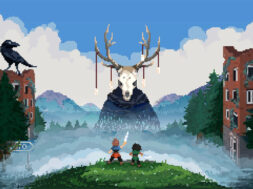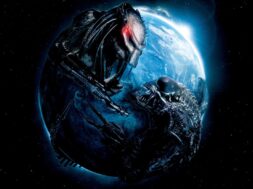The demolition derby is the perfect template for a video game. It’s fast, exciting and focused heavily on the sensory experience. During the late 90s and early 2000s, the car combat genre, a natural evolution of the demolition derby, had its moment in the sun. Games like Carmageddon, Interstate ’76, Vigilante 8 and even Cel Damage all brought their unique perspectives to the genre, but none made as big of an impact as the series that popularized the genre: Twisted Metal.
In 1995, Twisted Metal took the core concept of the demolition derby and merged it with the game design of Mario Kart. Players race unique vehicles around levels loosely based on real-world locations picking up powerups that range from missiles to napalm to a good old fashion oil slick as they eliminate each other one by one until only one remains. Each of the over-the-top drivers is brought to the competition with the promise of having a wish granted by Calypso, the mysterious figure behind the contest. The single-player campaign plays out like a fighting game, with the player battling a series of matches until they face the final boss.

The theming of the characters have always been horror-adjacent, featuring a sinister clown and the Grim Reaper himself, but the game never took itself too seriously. Character endings often had a tongue-in-cheek, Twilight Zone-style “be careful what you wish for” twist to them. As the series went on, it seemed to lean more into the goofiness, especially after the original developers left the series starting with the third entry. By the time Twisted Metal 4 rolled around, it was clear the series had lost its luster and was in need of retooling.
Enter Twisted Metal: Black. Series creator David Jaffe and his studio comprised of developers of the first two games rebooted the series for the still relatively new PlayStation 2. The gameplay was a more finely tuned version of what was already there. It was prettier, bigger and much faster than the game they could make on the original PlayStation, making it all the more satisfying in your hands. But what made the game stand out the most was its shift in tone. Black took a turn down a dark road, fully embracing the horror in disturbing and gruesome ways.
Twisted Metal Steering Towards TV Carnage?
Many of the same characters were present in the game, but they were all re-conceptualized as patients from Blackfield Asylum. Gone are the campier days of the first games, replaced with a thick coat of darkness. Whereas the earlier version of Mr. Grimm was the literal Grim Reaper, he’s now a broken Vietnam War veteran who wears the skull of a man he was forced to eat while captured. Needles Kane, the iconic driver of Sweet Tooth, is now an unrepentant, vicious serial killer cursed with a flaming skull, one of the few instances of the supernatural in the decidedly more grounded game.

Each of the characters tells their tale in the single-player story mode, which remains relatively unchanged from previous iterations. You select a character at the beginning, and are presented with three cutscenes throughout the campaign. In the beginning, you see the character getting recruited by the Calypso from the asylum, giving you a quick intro to what the character wants from the contest, but only tease the horrors they have experienced.
After fighting Minion, the mid-game boss, the full backstory of your character is revealed. These stories are some of the most upsetting elements of the game, diving deep into gruesome tragedy. My favorite backstory involves one of the new characters, No-Face, the driver of Crazy 8. No-Face was a small-time boxer who was badly injured in a big fight. Without much money, he went to a back alley doctor to get fixed up, only to find that the doctor had bet on him big and lost. After putting No-Face under, the doctor removed No-Face’s eyes and tongue, then stitched him shut, giving him his nickname.

When you finish the game, you are treated to one last ending scene where Calypso grants the contestant’s wish. Some of them do have a cruel twist of fate vibe like the earlier games, but often times characters end up getting violent retribution on those who wronged them. In the end, No-Face ends up with the doctor at his mercy and is handed a barbed wire-wrapped boxing glove. These finales aren’t quite as satisfying as the mid-game backstory cinematics, but they are a nice little black bow on the depraved gift that is the story mode.
Twisted Metal: Black shows you just how far strong and consistent aesthetics can go into changing the perception of your game. Even though the cutscenes are completely separate from the gameplay, this dark tone gives the combat a more desperate and vicious feel without having to make many tweaks, and made it the most memorable entry in the series. This tactic could definitely be applied to other genres in order to create unique and impactful new horror properties. Catherine gave us a glimpse at a horror-puzzle game hybrid, Mortal Kombat has been making horror-themed fighting games for decades, but what would it look like to put a dark coat of paint on a sports game? Or a superhero epic? Hopefully, some creative developers can find a scary angle on a well-worn genre to recapture this feeling.









